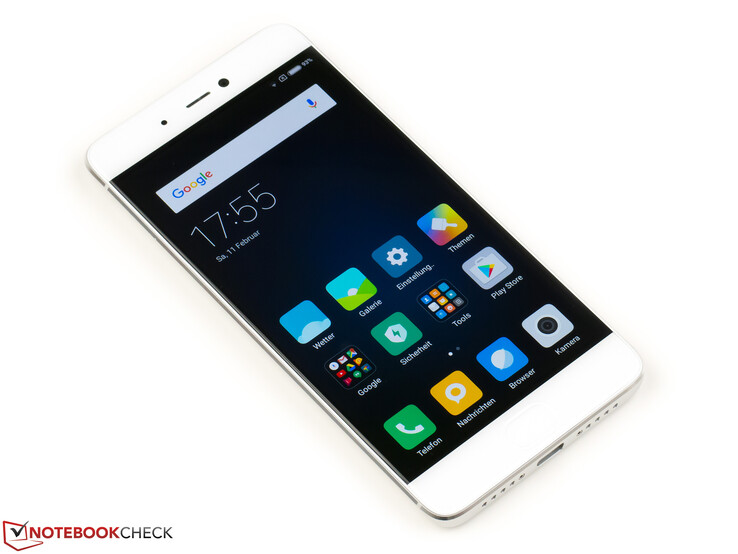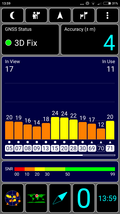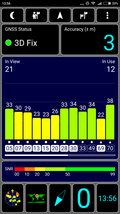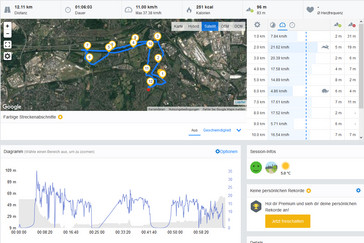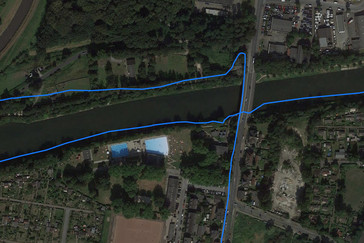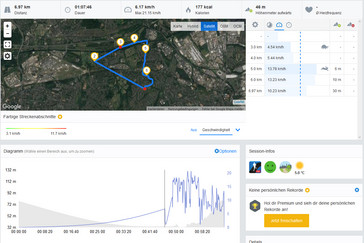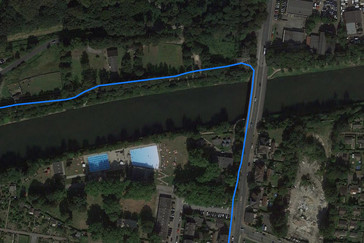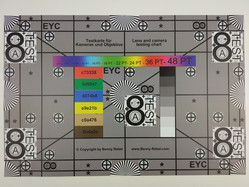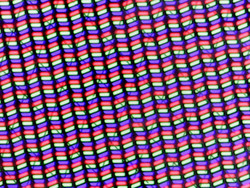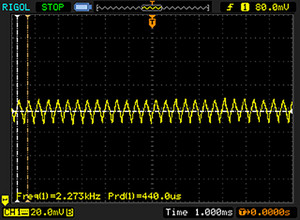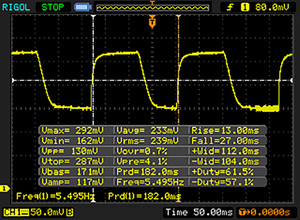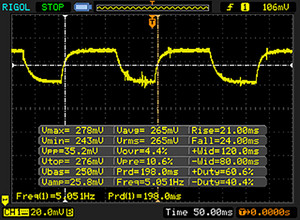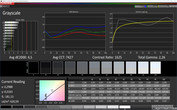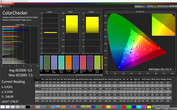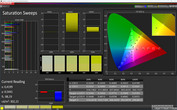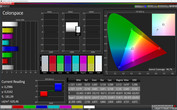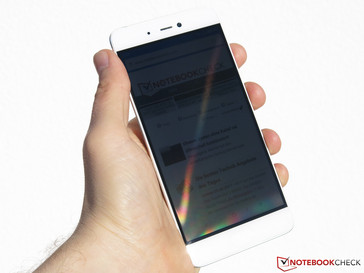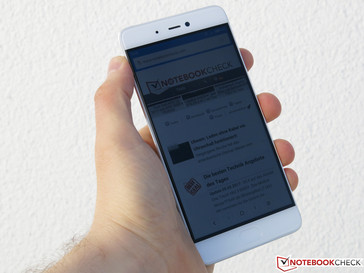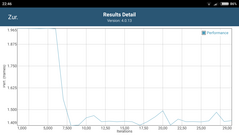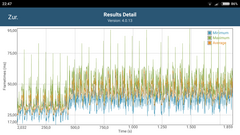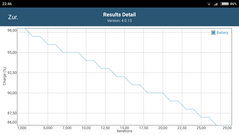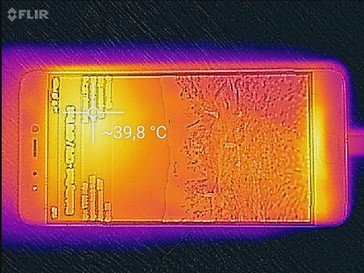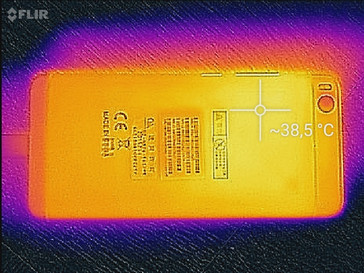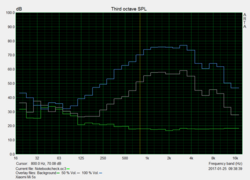Xiaomi Mi 5s Smartphone Review
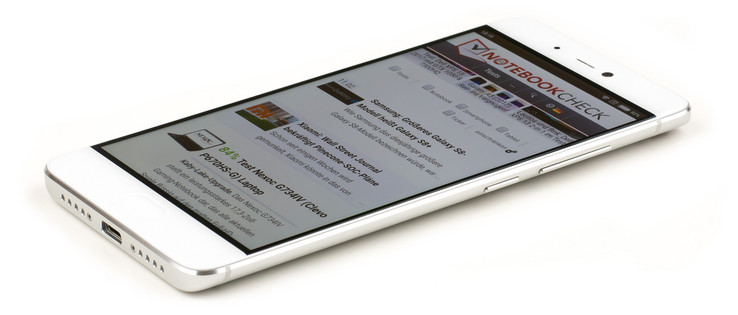
For the original German review, see here.
Xiaomi's upper-class Mi 5 - which we reviewed in July of 2016 - has now received a fairly major update. Following in Apple's footsteps, the new version now carries the letter "s" appended to the name. At 5.15 inches, the display size remains the same, but the internal components have been updated, as Xiaomi now uses the powerful Snapdragon-821 SoC and equips the phone with 128 GB of flash storage as well as 4 GB RAM. Another difference compared to the predecessor is the chassis, which is now completely made out of metal. The color choices are gold, black, silver, and pink. Like all Xiaomi smartphones, the Mi 5s isn't officially sold in Europe. Nonetheless, the phone is available from a few importers. The 32 GB version sells for about 300 Euro (~$317), while our top-of-the-line review smartphone costs 350 Euro (~$370). In addition, the user has to pay for shipping and - if applicable - taxes as well, so the Mi 5s ends up costing about as much as the predecessor.
Direct competitors are the Samsung Galaxy S7, the Huawei P9, as well as the HTC 10. The slightly larger OnePlus 3T with 5.5-inch display is also a contender.
Case
The smartphone measures 145.6 x 70.3 x 8.25 mm and is therefore slightly larger than the predecessor. The weight increases as well from 129 to 145 g (4.55 to 5.11 ounces), but compared to competing phones, the differences are quite minor. Thanks to the rounded back, the Mi 5s is actually very easy to hold.
The chassis is now made out of metal, so the torsional rigidity is very good. Pushing down on the case itself or the touchscreen has no noticeable ripple-effect on the display. The build quality is generally quite high, although the antenna strips can be felt when running the finger tips across the body. Some competing manufactures do a better job integrating those into the casing.
A SIM-card drawer on the side holds the two Nano-SIM cards. The battery is not designed to be user replaceable.
Connectivity
Our review smartphone features 4 GB of RAM and 128 GB of flash storage. As shipped, the user has access to 119 GB. Expanding the storage with microSD cards is unfortunately not possible.
Located at the bottom edge is the USB Type-C port, which only supports the older USB 2.0 standard, so data transfer is limited to about 35 MB/s. With USB OTG, the user can connect various external drives and peripherals. In addition, the phone features a 3.5 mm headphone jack. For wireless communication, the Mi 5s supports AC WLAN as well as Bluetooth 4.2 and NFC. Pictures and sound can be transferred to other devices via Miracast and DLNA.
The front of the smartphone houses an RGB LED and a fingerprint sensor.
Software
Since Xiaomi's smartphone was designed for the Chinese market, many of the preinstalled apps are only fully functional there. The only system languages offered are Chinese or English. Having said this, we should point out that we received our review smartphone with a Global ROM, which includes Google's Play services and supports many more system languages - including German. The ROM is based on Android 6.0.1 and the graphical interface MIUI 8.0. It should therefore be possible to receive OTA updates.
Xiaomi forgoes an app drawer, so all installed programs end up on the home screen. The app "Themes" allows the user to modify the interface to his or her liking.
Other useful features are the child mode, which makes it possible to restrict the available apps, as well as a "Dual App" function, which installs programs twice so the can be used independently.
Communication and GPS
The Mi 4s supports 4G, but the - at least in Germany - important LTE band 20 is not available. Xiaomi also doesn't specify the maximum transfer rates. Thanks to the AC WLAN module with MIMO support, the Mi 5S can either use the 2.4 GHz and the 5 GHz band. We recorded receive and send rates of 312 and 271 MBit/s, respectively with the phone connected to our reference router Linksys EA8500. The results are quite decent and comparable to other competing smartphones. Another positive aspect is the maximum possible WLAN distance, which is very good.
In addition, the Mi 5s includes support for Bluetooth 4.2 and NFC.
| Networking | |
| iperf3 transmit AX12 | |
| Apple iPhone 7 (Klaus I211) | |
| Samsung Galaxy S7 | |
| OnePlus 3T | |
| Xiaomi Mi 5s | |
| Huawei P9 | |
| Lenovo Moto Z Play | |
| iperf3 receive AX12 | |
| Apple iPhone 7 (Klaus I211) | |
| Xiaomi Mi 5s | |
| Samsung Galaxy S7 | |
| Huawei P9 | |
| OnePlus 3T | |
| Lenovo Moto Z Play | |
The GPS sensor is accurate to within 3 m (10 feet) outdoors and establishes a satellite lock quit quickly. Inside, the module reported our location also quite swiftly, but with a slightly reduced accuracy.
For a real-world test, we take the Mi 5s together with the bike computer Garmin Edge 500 on a bike ride. Unfortunately, the smartphone only recorded part of our track correctly, what likely can be attributed to power management. To prevent the deactivation of apps in the background, they have to be excluded in the system settings. At least as far as the recorded values are concerned, we didn't see large deviations, so the GPS precision should at least be sufficient for navigational purposes.
Telephone and Voice Quality
The telephone app has the usual features like a dial pad, a call log, as well as direct access to the contact list. A search bar is located up top.
During a normal call, both conversation parters were happy with the way the Mi 5s sounded. The speaker phone is a different story: while we didn't encounter any dropouts, voices sound tinny and aren't very loud on both ends of the conversation.
Cameras
While the predecessor's rear-facing camera featured a 16 MP sensor, the new Mi 5s only has a 12 MP unit at its disposal. At first, this might sound like it is a disadvantage - especially when one considers that the older model took very decent photos. The Sony IMX378 sensor which Xiaomi switched to is the same one which Google uses for their Pixel smartphone, so the quality is impressive. The 1/2.3-inch sensor is very large, which improves the low-light abilities. On the other hand, the new smartphone lacks an image stabilizer - the Mi 5 was equipped with one. The maximum lens aperture is f/2.0.
The main camera is capable of taking photos with a huge dynamic range (scene 2) as well as high sharpness (scene 1). The sharpness does decrease somewhat in the lower right-hand corner - something the photo of our test chart reveals as well. Even in low-light conditions we hardly ever had issues with blurred photos and the camera captures lots of details (scene 3). The only noticeable difference to the iPhone 7 Plus is the slightly higher image noise in the background. Compared to most other smarthphones, the Mi 5s fares exceptionally well.
The front-facing camera with its 16:9 aspect ratio features 4 MP. When changing to an aspect ratio of 4:3, the phone crops the image. Although the Mi 5s doesn't quite capture the amount of details the best selfie-cameras can, the picture quality is still very good. Remarkable is the narrow depth of field, which leads to nicely blurred backgrounds.
The main camera records 3820 x 2160 pixels at a rate of 30 fps. A Full-HD mode with 60 fps is unfortunately not available. Despite that, the recordings are astoundingly smooth. Another positive: during video recordings, the autofocus reacts promptly and the electronic image stabilization works very well. The webcam can record videos in Full-HD at a maximum frame rate of 30 fps.
The camera app has many different modes, including a manual mode as well as a RAW mode, which generates DNG instead of JPG files. To take a quick snapshot, the user can just double-click the volume-down button to open the camera from standby mode.
Accessories and Warranty
The package contains the Chinese charger (max. 18 w) with the USB cable, the SIM slot tool and a Chinese quickstart guide. A headset isn't included. Users who purchase from TradingShenzen - the supplier of the review smartphone - also get a EU adapter for the charger, a screen protector and a USB OTG cable. The retailer also supplies a one-year warranty against defects.
Since the Mi 5s is designated for the Asian market, it does not carry a CE certification. Please see our Guarantees, Return Policies and Warranties FAQ for country-specific information.
We also had the opportunity to review the VR goggles Mi VR Play, which are - just like Google's do-it-yourself Cardboard solution - passive, meaning they don't feature integrated electronic components. The goggles do have a button though which allows interaction with the virtual environment. Google's Cardboard app allows the user to get a taste of the virtual world. Unfortunately, the picture is quite pixelated and fast movements cause blurring. VR goggles featuring a simple construction commonly have this issue though. Still, a visit to the virtual world is an interesting experience.
Input Devices and Operation
With the Global ROM installed, the keyboard choices are either Google's Gboard or SwiftKey. Both keyboards can be configured easily, recognize swiping and feature voice recognition. The precise touchscreen makes typing that much easier.
The area in the middle underneath the display houses the - consistently reliable - fingerprint sensor, which wakes up the smartphone from standby and unlocks it as well. In addition, the button takes the user back to the home screen. Located to the left and two the right of the sensor are two lighted touch buttons. All three together function as the Android navigation bar. The side edge houses the volume rocker switch and the power button, which feature crisp feedback.
Display
No matter if the automatic brightness is turned on or off: at 596 cd/m² (white display background) and with a peak of 627 cd/m², the display is very bright indeed. The black value of 0.6 cd/m² is comparatively high though, so the contrast ratio of 1045:1 isn't quite as good as what we've seen from some of the competitors. When looking at evenly distributed dark and light areas (Average Picture Level/APL 50), the brightness decreases slightly to 593 cd/m². The brightness distribution is pretty even at 91 percent, although we noticed a very thin brighter stripe at the top edge of the display. At a brightness setting of 17 percent and below, the Mi 5s utilizes PWM. Since the frequency is very high at 2273 Hz, even sensitive users should remain unaffected.
| |||||||||||||||||||||||||
Brightness Distribution: 91 %
Center on Battery: 593 cd/m²
Contrast: 1045:1 (Black: 0.6 cd/m²)
ΔE Color 4.5 | 0.5-29.43 Ø5
ΔE Greyscale 4.5 | 0.57-98 Ø5.3
Gamma: 2.26
| Xiaomi Mi 5s IPS, 1920x1080, 5.15 | Samsung Galaxy S7 SAMOLED, 2560x1440, 5.10 | OnePlus 3T Optic-AMOLED, 1920x1080, 5.50 | Huawei P9 IPS-NEO, JDI, 1920x1080, 5.20 | HTC 10 Super LCD 5, 2560x1440, 5.20 | Xiaomi Mi 5 IPS, 1920x1080, 5.15 | |
|---|---|---|---|---|---|---|
| Screen | ||||||
| Brightness middle | 627 | 350 -44% | 421 -33% | 582 -7% | 445 -29% | 598 -5% |
| Brightness | 596 | 351 -41% | 430 -28% | 563 -6% | 434 -27% | 566 -5% |
| Brightness Distribution | 91 | 98 8% | 84 -8% | 91 0% | 93 2% | 90 -1% |
| Black Level * | 0.6 | 0.38 37% | 0.36 40% | 0.51 15% | ||
| Contrast | 1045 | 1532 47% | 1236 18% | 1173 12% | ||
| Colorchecker dE 2000 * | 4.5 | 2.04 55% | 7.1 -58% | 4.4 2% | 2.8 38% | 3.5 22% |
| Colorchecker dE 2000 max. * | 7.5 | 3.25 57% | 15.3 -104% | 7.4 1% | 5.8 23% | 6.1 19% |
| Greyscale dE 2000 * | 4.5 | 1.63 64% | 6.8 -51% | 4.8 -7% | 3.7 18% | 3.5 22% |
| Gamma | 2.26 97% | 2.07 106% | 2.23 99% | 2.2 100% | 2.31 95% | 2.29 96% |
| CCT | 7427 88% | 6391 102% | 7866 83% | 6175 105% | 7164 91% | 6532 100% |
| Color Space (Percent of AdobeRGB 1998) | 86.86 | 77.78 | ||||
| Color Space (Percent of sRGB) | 99.35 | 99.44 |
* ... smaller is better
Screen Flickering / PWM (Pulse-Width Modulation)
| Screen flickering / PWM detected | 2273 Hz | ≤ 17 % brightness setting | |
The display backlight flickers at 2273 Hz (worst case, e.g., utilizing PWM) Flickering detected at a brightness setting of 17 % and below. There should be no flickering or PWM above this brightness setting. The frequency of 2273 Hz is quite high, so most users sensitive to PWM should not notice any flickering. In comparison: 53 % of all tested devices do not use PWM to dim the display. If PWM was detected, an average of 17900 (minimum: 5 - maximum: 3846000) Hz was measured. | |||
Display Response Times
| ↔ Response Time Black to White | ||
|---|---|---|
| 40 ms ... rise ↗ and fall ↘ combined | ↗ 13 ms rise | |
| ↘ 27 ms fall | ||
| The screen shows slow response rates in our tests and will be unsatisfactory for gamers. In comparison, all tested devices range from 0.1 (minimum) to 240 (maximum) ms. » 97 % of all devices are better. This means that the measured response time is worse than the average of all tested devices (21.5 ms). | ||
| ↔ Response Time 50% Grey to 80% Grey | ||
| 45 ms ... rise ↗ and fall ↘ combined | ↗ 21 ms rise | |
| ↘ 24 ms fall | ||
| The screen shows slow response rates in our tests and will be unsatisfactory for gamers. In comparison, all tested devices range from 0.2 (minimum) to 636 (maximum) ms. » 73 % of all devices are better. This means that the measured response time is worse than the average of all tested devices (33.7 ms). | ||
While the color and grayscale deviations are pretty modest with DeltaE values of 4.5 for both, some competitors are closer to the ideal with DeltaE values of less than 3. The temperature of 7427K is also much higher than the optimum of 6500 K, so white looks more bluish. Some options in the settings menu allow the user to modify the output if so desired.
Performance
While the predecessor featured a Snapdragon 820 SoC with four Kryo cores, the Mi 5s is equipped with the slightly revised and updated Snapdragon 821. The two faster cores run at up to 2.15 GHz (Mi 5: 1.8 GHz); the two energy-saving cores run at 1.6 GHz as before. The clock rate of the integrated Adreno 530 GPU is also slightly higher at 653 MHz.
The Mi 5s did particularly well when running the GFXBench and 3DMark benchmark tests, which mainly tax the GPU. Here, the smartphone pulled ahead of the other units in our comparison. The result of the AnTuTu v6 benchmark test is also quite impressive with only the OnePlus 3T squeezing more performance out of the Snapdragon 821 SoC. When running PCMark, the Mi 5s trails the competition for the most part. What's interesting is the fact that the predecessor did quite a bit better here. The results of the browser and flash storage tests are just about average. Since all upper-class smartphones offer a high level of performance, the Mi 5s has more than sufficient power for everyday use. During our time with the smartphone, we never encountered longer load times and animations always remained stutter-free.
| AnTuTu v6 - Total Score (sort by value) | |
| Xiaomi Mi 5s | |
| Samsung Galaxy S7 | |
| OnePlus 3T | |
| Huawei P9 | |
| HTC 10 | |
| Xiaomi Mi 5 | |
| Geekbench 4.0 | |
| 64 Bit Multi-Core Score (sort by value) | |
| Xiaomi Mi 5s | |
| OnePlus 3T | |
| Huawei P9 | |
| 64 Bit Single-Core Score (sort by value) | |
| Xiaomi Mi 5s | |
| OnePlus 3T | |
| Huawei P9 | |
| Compute RenderScript Score (sort by value) | |
| Xiaomi Mi 5s | |
| Huawei P9 | |
| PCMark for Android - Work performance score (sort by value) | |
| Xiaomi Mi 5s | |
| Samsung Galaxy S7 | |
| OnePlus 3T | |
| Huawei P9 | |
| HTC 10 | |
| Xiaomi Mi 5 | |
| Octane V2 - Total Score (sort by value) | |
| Xiaomi Mi 5s | |
| Samsung Galaxy S7 | |
| OnePlus 3T | |
| Huawei P9 | |
| HTC 10 | |
| Xiaomi Mi 5 | |
| Mozilla Kraken 1.1 - Total (sort by value) | |
| Xiaomi Mi 5s | |
| Samsung Galaxy S7 | |
| OnePlus 3T | |
| Huawei P9 | |
| HTC 10 | |
| Xiaomi Mi 5 | |
| JetStream 1.1 - Total Score (sort by value) | |
| Xiaomi Mi 5s | |
| Samsung Galaxy S7 | |
| OnePlus 3T | |
| Huawei P9 | |
| HTC 10 | |
| Xiaomi Mi 5 | |
| GFXBench (DX / GLBenchmark) 2.7 | |
| T-Rex Onscreen (sort by value) | |
| Xiaomi Mi 5s | |
| Samsung Galaxy S7 | |
| OnePlus 3T | |
| Huawei P9 | |
| HTC 10 | |
| Xiaomi Mi 5 | |
| 1920x1080 T-Rex Offscreen (sort by value) | |
| Xiaomi Mi 5s | |
| Samsung Galaxy S7 | |
| OnePlus 3T | |
| Huawei P9 | |
| HTC 10 | |
| Xiaomi Mi 5 | |
| GFXBench 3.0 | |
| 1920x1080 1080p Manhattan Offscreen (sort by value) | |
| Xiaomi Mi 5s | |
| Samsung Galaxy S7 | |
| OnePlus 3T | |
| Huawei P9 | |
| HTC 10 | |
| Xiaomi Mi 5 | |
| on screen Manhattan Onscreen OGL (sort by value) | |
| Xiaomi Mi 5s | |
| Samsung Galaxy S7 | |
| OnePlus 3T | |
| Huawei P9 | |
| HTC 10 | |
| Xiaomi Mi 5 | |
| GFXBench 3.1 | |
| 1920x1080 Manhattan ES 3.1 Offscreen (sort by value) | |
| Xiaomi Mi 5s | |
| Samsung Galaxy S7 | |
| OnePlus 3T | |
| Huawei P9 | |
| HTC 10 | |
| Xiaomi Mi 5 | |
| on screen Manhattan ES 3.1 Onscreen (sort by value) | |
| Xiaomi Mi 5s | |
| Samsung Galaxy S7 | |
| OnePlus 3T | |
| Huawei P9 | |
| HTC 10 | |
| Xiaomi Mi 5 | |
| 3DMark | |
| 1280x720 offscreen Ice Storm Unlimited Physics (sort by value) | |
| Xiaomi Mi 5s | |
| Samsung Galaxy S7 | |
| OnePlus 3T | |
| Huawei P9 | |
| HTC 10 | |
| Xiaomi Mi 5 | |
| 1280x720 offscreen Ice Storm Unlimited Graphics Score (sort by value) | |
| Xiaomi Mi 5s | |
| Samsung Galaxy S7 | |
| OnePlus 3T | |
| Huawei P9 | |
| HTC 10 | |
| Xiaomi Mi 5 | |
| 1280x720 offscreen Ice Storm Unlimited Score (sort by value) | |
| Xiaomi Mi 5s | |
| Samsung Galaxy S7 | |
| OnePlus 3T | |
| Huawei P9 | |
| HTC 10 | |
| Xiaomi Mi 5 | |
| 2560x1440 Sling Shot OpenGL ES 3.0 Physics (sort by value) | |
| Xiaomi Mi 5s | |
| Samsung Galaxy S7 | |
| OnePlus 3T | |
| Huawei P9 | |
| HTC 10 | |
| Xiaomi Mi 5 | |
| 2560x1440 Sling Shot OpenGL ES 3.0 Graphics (sort by value) | |
| Xiaomi Mi 5s | |
| Samsung Galaxy S7 | |
| OnePlus 3T | |
| Huawei P9 | |
| HTC 10 | |
| Xiaomi Mi 5 | |
| 2560x1440 Sling Shot OpenGL ES 3.0 (sort by value) | |
| Xiaomi Mi 5s | |
| Samsung Galaxy S7 | |
| OnePlus 3T | |
| Huawei P9 | |
| HTC 10 | |
| Xiaomi Mi 5 | |
| AndroBench 3-5 | |
| Random Write 4KB (sort by value) | |
| Xiaomi Mi 5s | |
| Samsung Galaxy S7 | |
| OnePlus 3T | |
| Huawei P9 | |
| HTC 10 | |
| Xiaomi Mi 5 | |
| Random Read 4KB (sort by value) | |
| Xiaomi Mi 5s | |
| Samsung Galaxy S7 | |
| OnePlus 3T | |
| Huawei P9 | |
| HTC 10 | |
| Xiaomi Mi 5 | |
| Sequential Write 256KB (sort by value) | |
| Xiaomi Mi 5s | |
| Samsung Galaxy S7 | |
| OnePlus 3T | |
| Huawei P9 | |
| HTC 10 | |
| Xiaomi Mi 5 | |
| Sequential Read 256KB (sort by value) | |
| Xiaomi Mi 5s | |
| Samsung Galaxy S7 | |
| OnePlus 3T | |
| Huawei P9 | |
| HTC 10 | |
| Xiaomi Mi 5 | |
* ... smaller is better
Gaming
Even demanding games like Asphalt 8 or Dead Trigger 2 pose no problem thanks to the the powerful Adreno 530 GPU combined with a comparatively low display resolution of 1920 x 1080 pixels.
Touchscreen operation is very precise and the internal sensors work flawlessly as well when playing games.
Emissions
Temperature
Under load, the Mi 5s mainly gets warm up front, although the maximum temperature of 40.5 °C is absolutely no reason for concern. The back of the smartphone tops out at only 36.4 °C.
To check if these moderate temperatures are the result of throttling, we run the GFXBench battery test, which repeats the Manhattan test thirty times in a row and not only records the battery level, but also the performance. The Mi 5s was able to maintain its power output for six times in a row; after that the performance declined by up to 28 %. For a powerful SoC, this isn't unexpected and some competing models, like the HTC 10 or the Huawei P9, suffer from more pronounced throttling under the same conditions.
(±) The maximum temperature on the upper side is 40.5 °C / 105 F, compared to the average of 35 °C / 95 F, ranging from 21.9 to 56 °C for the class Smartphone.
(+) The bottom heats up to a maximum of 36.4 °C / 98 F, compared to the average of 33.8 °C / 93 F
(+) In idle usage, the average temperature for the upper side is 30.5 °C / 87 F, compared to the device average of 32.7 °C / 91 F.
Speaker
Sound output is courtesy of a mono speaker located on the lower edge. While the predecessor actually sounded quite pleasing, the Mi 5s has taken a step backward in that regard: music sounds tinny and at higher frequencies quite shrill. The sound is somewhat unbalanced, which is evident when looking at the pink noise diagram. Between 1000 and 4000 Hz, the curve reaches a plateau, while the other frequencies drop of rather sharply. The Mi 5 had a much better response - especially in the higher frequency range. At 85 dB, the maximum volume is quite loud, however.
Sound output via the 3.5 mm audio jack is significantly better. When we connected a headphone, the audio signal was free of any interference or other issues.
Xiaomi Mi 5s audio analysis
(+) | speakers can play relatively loud (85 dB)
Bass 100 - 315 Hz
(-) | nearly no bass - on average 18.6% lower than median
(±) | linearity of bass is average (7.8% delta to prev. frequency)
Mids 400 - 2000 Hz
(±) | higher mids - on average 7.8% higher than median
(+) | mids are linear (6.3% delta to prev. frequency)
Highs 2 - 16 kHz
(±) | higher highs - on average 6.1% higher than median
(±) | linearity of highs is average (7.9% delta to prev. frequency)
Overall 100 - 16.000 Hz
(±) | linearity of overall sound is average (24.5% difference to median)
Compared to same class
» 53% of all tested devices in this class were better, 8% similar, 40% worse
» The best had a delta of 12%, average was 38%, worst was 134%
Compared to all devices tested
» 70% of all tested devices were better, 6% similar, 23% worse
» The best had a delta of 4%, average was 25%, worst was 134%
Xiaomi Mi 5 audio analysis
(+) | speakers can play relatively loud (86.5 dB)
Bass 100 - 315 Hz
(-) | nearly no bass - on average 23.1% lower than median
(±) | linearity of bass is average (11.8% delta to prev. frequency)
Mids 400 - 2000 Hz
(+) | balanced mids - only 3.7% away from median
(+) | mids are linear (5.1% delta to prev. frequency)
Highs 2 - 16 kHz
(±) | higher highs - on average 8.9% higher than median
(+) | highs are linear (4.1% delta to prev. frequency)
Overall 100 - 16.000 Hz
(±) | linearity of overall sound is average (22.7% difference to median)
Compared to same class
» 43% of all tested devices in this class were better, 7% similar, 50% worse
» The best had a delta of 12%, average was 38%, worst was 134%
Compared to all devices tested
» 62% of all tested devices were better, 6% similar, 32% worse
» The best had a delta of 4%, average was 25%, worst was 134%
Comparison Frequency diagrams (Check boxes are selectable!)
Energy Management
Power Consumption
As far as the power consumption is concerned, the Mi 5s posts slightly better results than the competition except for the Samsung Galaxy S7, which is slightly more frugal. Compared to the predecessor, Xiaomi were able to reduce the power draw at medium load levels, while the maximum idle consumption is slightly higher.
| Off / Standby | |
| Idle | |
| Load |
|
| Xiaomi Mi 5s 3200 mAh | Samsung Galaxy S7 3000 mAh | OnePlus 3T 3400 mAh | Huawei P9 3000 mAh | HTC 10 3000 mAh | Xiaomi Mi 5 3000 mAh | |
|---|---|---|---|---|---|---|
| Power Consumption | 9% | -18% | -15% | -19% | -4% | |
| Idle Minimum * | 0.4 | 0.68 -70% | 0.61 -53% | 0.77 -93% | 0.68 -70% | 0.45 -13% |
| Idle Average * | 1.7 | 1.02 40% | 1.77 -4% | 2.36 -39% | 1.49 12% | 1.68 1% |
| Idle Maximum * | 1.81 | 1.14 37% | 1.81 -0% | 2.37 -31% | 1.91 -6% | 1.71 6% |
| Load Average * | 5.84 | 4.73 19% | 6.67 -14% | 3.09 47% | 7.4 -27% | 6.7 -15% |
| Load Maximum * | 9.12 | 7.16 21% | 10.98 -20% | 5.35 41% | 9.71 -6% | 9.18 -1% |
* ... smaller is better
Battery Life
The Mi 5s ran for an outstanding 11 hours and 3 minutes during our WLAN test. None of the competitors managed to come close - the larger battery obviously pays dividends here. To extend the time away from outlets, the user also has the option to activate the power savings mode, which more closely monitors background processes and deactivates data synchronization as well.
Since the Mi 5s supports QuickCharge 3.0, charging doesn't take long at all. The included 18 watt charger does require an adapter so it can be used in Europe, however.
| Xiaomi Mi 5s 3200 mAh | Samsung Galaxy S7 3000 mAh | OnePlus 3T 3400 mAh | Huawei P9 3000 mAh | HTC 10 3000 mAh | Xiaomi Mi 5 3000 mAh | |
|---|---|---|---|---|---|---|
| Battery Runtime | ||||||
| WiFi v1.3 | 663 | 456 -31% | 494 -25% | 569 -14% | 413 -38% | 504 -24% |
Pros
Cons
Verdict
Xiaomi's Mi 5s impresses in many areas. The smartphone doesn't require many compromises when it comes to its features: the Mi 5s supports dual SIMs, the display is very bright and the user interface MIUI 8.0 offers plenty of additional functionality. In addition to the good performance, the smarpthone scores with its long run time during our real-world WLAN test. The main disadvantage is simply the fact that Xiaomi neglected to adapt the phone to the European market. The Global ROM can remedy some of the shortcomings, but it's still a shame that the Mi 5s doesn't support the commonly used LTE band 20. Some interested users also might be discouraged from purchasing since the smartphone needs to be imported.
Xiaomi's Mi 5s offers high-end components wrapped up in an upscale metal case design. Starting at 300 Euro (~$317) plus shipping and taxes, the Mi 5s is priced like an upper middle-class smarpthone, so an import can be an attractive proposition.
The price gap between the review unit and other (officially imported) top smarpthones in Europe has - in some cases - shrunken significantly, however, so many of the smartphones in our comparison are available at a starting price of 450 Euro (~$475).
Xiaomi Mi 5s
-
02/24/2017 v6(old)
Andreas Kilian


 Deutsch
Deutsch English
English Español
Español Français
Français Italiano
Italiano Nederlands
Nederlands Polski
Polski Português
Português Русский
Русский Türkçe
Türkçe Svenska
Svenska Chinese
Chinese Magyar
Magyar